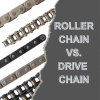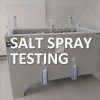Causes and Prevention of Roller Chain Failure

Roller chain failure can arise from various factors, often linked to materials, design, manufacturing, installation, and operating conditions. Below are some common causes of chain failure, along with their symptoms and preventive measures:
1. Wear Failure:
◎ Causes: Friction between pins, bushings, and rollers, especially under inadequate lubrication or the intrusion of foreign particles.
◎ Symptoms: Chain elongation, reduced operational precision.
◎ Prevention: Regularly lubricate the chain to reduce friction, and maintain a clean working environment to prevent contamination.
2. Fatigue Damage:
◎ Causes: Cracks and fractures caused by long-term cyclic loading.
◎ Symptoms: Cracks or fractures appearing on chain plates or pins.
◎ Prevention: Use high-fatigue-strength materials, and minimize stress concentration through improved design.
3. Overload Failure:
◎ Causes: Operation under excessive loads or impact forces.
◎ Symptoms: Deformed chain plates, bent pins, or complete chain breakage.
◎ Prevention: Select chains that meet the required load specifications, and reduce impact forces by using appropriate shock-absorbing mechanisms.
By implementing regular maintenance, using the chain correctly, and selecting appropriate chain specifications, the risks of failure can be effectively minimized, ensuring longer service life and reliable operation.














